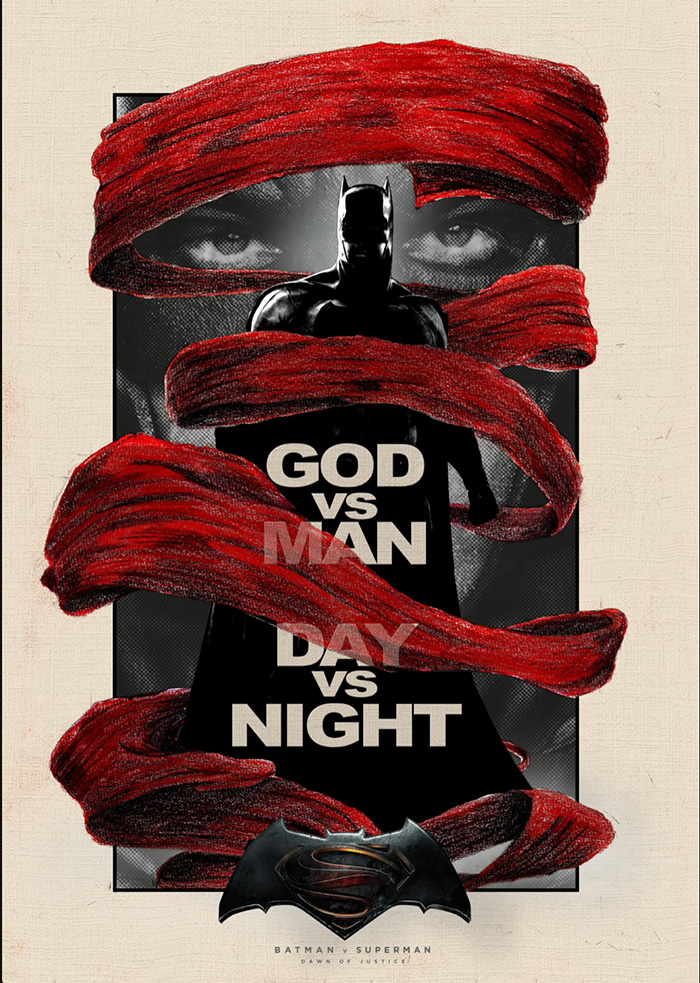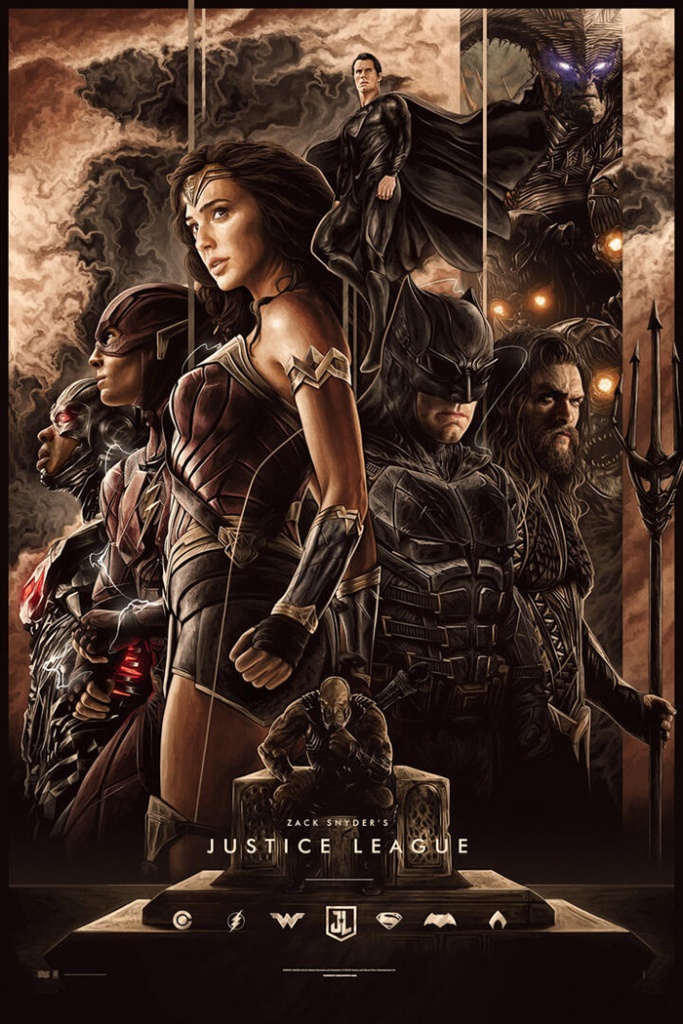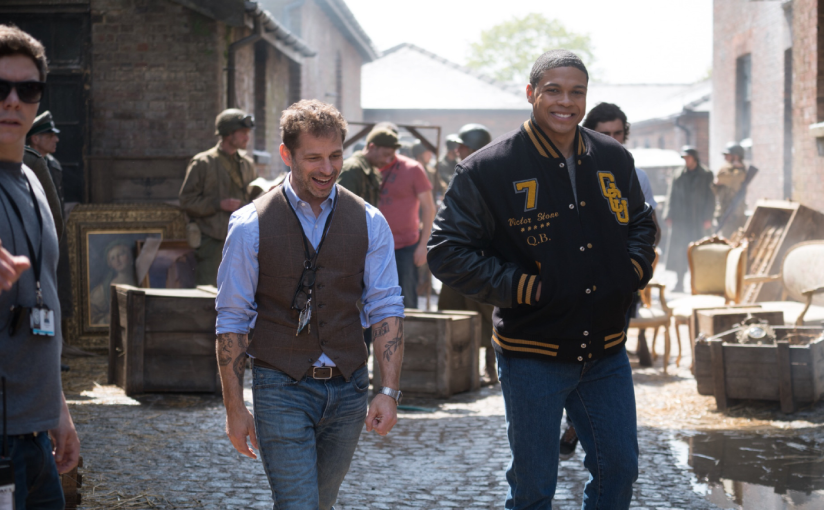In the final part of our Zack Snyder Retrospective, we look at his most decisive works to date and why some people love them, and others hate them.
Note: This is the final part of a series of retrospectives I wrote for Phasr Media. Here is Part 1, Part 2, and Part 3.
In Part 3 of Phasr’s deep dive into the Snyder filmography, we ended by having a look at 2013’s Man of Steel. For me, this is where Snyder really stretches his ability as a storyteller and creates a trilogy that rivals the original Star Wars movies, Lord Of The Rings or even Christopher Nolan’s own The Dark Knight Trilogy.
Shall we?
Batman v Superman: Dawn of Justice (2016)

Note: The Theatrical Cut is good, but also an unwieldy, obscure beast. For this retrospective, we’ll be looking at what is also called The Ultimate Edition released for home media.
“Human beings in a mob
Kanye West & Jazy-Z, No Church In The Wild
What’s a mob to a king? What’s a king to a god?
What’s a god to a non-believer who don’t believe in anything?”
Those lyrics are the perfect example of what Snyder, Goyer, and new writer, Chris Terrio, wanted to explore in the follow up to Man Of Steel. And let’s face it, the Theatrical Cut doesn’t come close to doing so. With a studio mandate to keep the movie under 3-hours, Snyder was forced to cut a lot of scenes that made Lex Luthor’s (Jesse Eisenberg) plan make sense, and gave us a better insight into Superman and his place in the world.
It’s easy to say that Snyder doesn’t understand the characters and is just being edgy for the sake of it. But the reality of it is this: Snyder and Co. have given us the Batman, Superman, and Wonder Woman for this generation and current times. We live in a consistent darkening time, and our heroes have to mimic and follow this. The same thing happened with the ancient myths and heroes of our ancestors. So why not our own version?
Batman V Superman is a movie about hate and fear. Fear of what we don’t understand. Fear of what we cannot control. And how that fear can turn into hatred. The prime examples of this are Batman himself and Lex Luthor. Batman (Ben Affleck) hates Superman for what he did to Metropolis. This version of the character is an apathetic alcoholic who has let fear consume him, which makes it natural for him to make the leap to wanting to kill Superman without a thought.
Luthor’s way of looking at Superman is equally down to earth. Think about it! He is one of the smartest men on the planet, a young tech-giant with the world at his fingertips. Imagine being this man and then discovering that gods are real and you are nothing more than a mere weak mortal. Naturally, you’d want to control that god. What other reaction is there?
But as the movie progresses, Luthor’s fear also becomes hate when he realizes he cannot control either Batman or Superman. So he decides to destroy them both and be the last man standing to control the planet.
A lot has been said about Eisenberg’s portrayal of Luthor. Gone is the bald head and stern demeanor. Instead, we have an almost ADHD riddled child playing at being a grown-up. Some have compared the performance to that of another Eisenberg character, Mark Zuckerberg in David Fincher’s The Social Network (2010). I can see that. With Facebook and other tech giants gaining more and more sway and control, it wouldn’t be that outrageous if one day, the real Zuckerberg took over the world. This portrayal once again goes back to my question: Why can’t we update and reinvent comic characters for movies?
How do we create a story in which Bruce Wayne is traumatized by the war of Krypton coming to Earth, and in which he enters into this kind of madness? He becomes Captain Ahab, and he won’t listen to saner voices, like Alfred, for example, who are telling him to just see reason. He’s a man possessed.
Chris Terrio, Vanity Fair interview
The same is said for Affleck’s version of Batman (which is my favorite live-action take). In Batman v Superman, this Batman is a demon with our first introduction to the Gotham Bat being filmed and feeling like a horror movie. This Batman is a monster without remorse, who has only one way to rid his city of the criminal element: Killing.
Men fall from the sky, the gods hurl thunderbolts, innocents die. That’s how it starts, sir. The fever, the rage, the feeling of powerlessness that turns good men… cruel.
Alfred (Jeremy Irons), Batman v Superman: Dawn Of Justice
Once again, yes, Batman does not kill, and this movie does something that everyone seems to ignore time and time again. Batman kills throughout Batman v Superman, which when you really look at this version and all he’s gone through, it makes total sense. But there comes a moment when something happens and he DOES NOT KILL. At the end of his battle with Superman, spear raised to strike down his enemy and all he hates, a terrified Superman begs him to “Save Martha!” and everything changes. The last words of his father hit him and at that moment Batman realizes Superman has a mother and that he did not ask for any of this. In this pivotal moment, Batman finally does not kill.
Batman v Superman: Dawn of Justice Ultimate Edition is the story of a fallen idol who has lost his humanity and rediscovers it. It is a movie about a god, lost to his own fate, and is finally becoming truly human with his own sacrifice.
The other thing the Ultimate Edition does is to keep everything that happens in Africa front and center. It also gives Superman more lines and actually gives him a character arch. This is indeed the ultimate version of Batman v Superman.
And yes, any discussion about Batman v Superman has to include a mention of both Gal Gadot’s Wonder Woman, and the amazing score by Hans Zimmer and Junkie XL. I think the perfect moment that solidified both Gadot and Junkie XL in the DC Extended Universe is when we first get the full Wonder Woman shot during the finale with Doomsday, and her iconic theme starts blasting through the speakers. That sums it all up, the bad-assery and awesomeness of it all.
I’m not going to talk about the Joss Whedon version of Justice League that was released in 2017. And there is far too much out there that talks about the tragedy that befell the Snyder family (if you want to read all about that, check out this article from Vanity Fair). Instead, we’ll be going right for the bombastic and truly epic finale of his trilogy.
Zack Snyder’s Justice League (2021)

I’m going to say it, the 2017 version of Justice League is a cluster-fuck of a movie. It had been a while since I last watched it and in preparing this retrospective, I sat down and put it on. After about 20 minutes, I had to turn it off.
Joss Whedon is a good director, he handles actors well, especially when they are shooting witty one-liners, quips, and speak ‘Whedonspeak’. Look at Buffy The Vampire Slayer, Firefly, and the first two Avengers movies. But, unfortunately, his particular worldview doesn’t meld with what Snyder had created… Although, the opening credits using the cover of Leonard Cohen’s Everybody Knows sets the tone perfectly.
But, as I already said, we’re not focusing on that. Oh no, dear friends, we’ll be discussing the magnum opus of Snyder’s career. The movie that proved the mad genius of what Snyder wanted to do, and of course, gave us Darkseid (Ray Porter) on the big screen for the first time.
The end of Batman v Superman has Bruce Wayne and Diana Prince talking after the funeral of Clark Kent. It’s a poignant scene that gives us the perfect setup for what would become Snyder’s next DC film, and the overall theme and character arch for our heroes:
Men are still good. We fight, we kill, we betray one another, but we can rebuild. We can do better. We will. We have to.
Bruce Wayne (Ben Affleck), Batman v Superman
Now, cut to Zack Snyder’s Justice League, or as it’s more commonly known, The Snyder Cut, and how does it begin? By showing the death of Superman and the literal ripples of that monumental moment across Metropolis, Gotham, the seas and the land of Themyscira. As his death cry fades, a strange box activates. These are the mother boxes and they call for their master.
What a beginning, eh? And what follows is 4 hours and 2 minutes of pure Snyder mixed with everything we know and love about the Justice League. But, unlike the previous movie, which is all about fear, Zack Snyder’s Justice League is focused on hope.
The best example of this is Batman, once again played perfectly by Ben Affleck. The events of Batman v Superman, especially the sacrifice of Superman, have affected him deeply and here we see him doing all he can to save humanity. Not by fear, not by intimidation, but by uniting everyone in an act of hope. In the very first scene with him, Batman has crossed ice caps and snow covered tundras to find Arthur Curry/Aquaman (Jason Momoa) and try to convince him to join up. Everything about this Batman is different, he’s much more human and, by the end of the movie, he has fully embraced who he once was.
Nearly all members of the League go through this transformation throughout the movie. But, before we get to them, let’s take a moment to talk about Chris Terrio, the scriptwriter who received sole billing on Zack Snyder’s Justice League, and what a monumental task he had.
It might’ve been a big, unruly beast, and obviously it’s four hours and the movie is maximalist and it’s operatic and, sure, it’s a little crazy, but I think the movie is crazy in the best way.
Chris Terrio, Vanity Fair interview
And what a crazy movie this is. There is a grace and ease of movement for the camera in certain sequences. The steadicam tracking shot of the terrorist group entering the court is balletic with how it circles about the armed men. Another stand-out sequence is when the primary villain, Steppenwolf (Ciarán Hinds), attacks the Amazons and gives chase to their Queen (Connie Nielsen) on horseback. In fact, each of the action sequences has a balletic choreography and flow to them that heightens the impact of each hit, and of course, Snyder shoots the shit out of everything.
But, back to the characters.
Each time a character is introduced, they are in the same place that Batman was in Batman v Superman. Aquaman doesn’t want anything to do with either the Atlanteans or even the world of men (though he inherently saves people), but over the course of the movie as well as dealing with Vulko (Willem Dafoe) and Mera (Amber Heard) he begins to understand his place in the world and having a form of hope.
Barry Allen/ The Flash (Ezra Miller) isn’t the annoying quip machine Whedon turned him into. Yes, he makes jokes, but it’s more of a coping mechanism he has developed as he tries to help his incarcerated father. Unlike Aquaman, Barry does have hope, but it comes across as naive and misplaced until he begins to stand up for himself and focus on the greater good in the climactic battle.
Wonder Woman returns, and yes, she saves people, but Diana is still hiding from the world. In a way, she has abandoned any hope for humans she once showed in the standalone movie Wonder Woman (2017). She is the guiding light for the League, but there is a sadness to her and at times, a glimmer of doubt in her eyes.
And then we have the heart of the movie.
A good portion of the movie is focused on the character of Victor Stone/Cyborg (a brilliant Ray Fisher), who spends the majority of it trying to come to terms with his new life. No longer the star athlete, he sees himself as a monster not fit for the world and abandons it. But, in a well-crafted sequence, he begins to come to grips with what he is and can do. Controlling cyberspace and dishing out justice and help to those in need. Cyborg is everyone who goes through a turbulent change in their lives and has to deal with it or become forever lost.
Of course, by the end of the movie, and after many mini-music videos and spectacular action sequences, the league comes together to save the world from Steppenwolf and fully embrace hope.
Speaking of the film’s villains, what Snyder did with his cut makes much more sense and takes a bland, almost Marvel-esque character and turns him into a sympathetic person. In the Whedon version, Steppenwolf is a stock character, shouting inane lines about fear and his end makes no sense whatsoever. In a world where the villain makes a movie, the fact he is so forgettable is a sin. But, then in comes Snyder and we get a ‘man’ searching for redemption. All this version of Steppenwolf wants is to go home, something we all have experienced. And by redesigning the character and giving him big child-like eyes, we can better empathize with him.
Then, there’s the big man himself, Darkseid. The Lord of Apokolips has always been compared to Marvel’s Thanos, but in actuality, I’ve always preferred Darkseid. In every depiction of him, he is calm, cool, and collected to such a degree that it takes a buttload of things to go wrong for him to raise an eyebrow or lose his temper. Keeping him in the background, only showing him through a melting metal screen is a good way of teasing him out and when we finally see him, in the flesh, it’s at the end of the movie where his plans are ruined, but he sees what will become his archenemies.
Final Thoughts
Is this a perfect movie? No, there is no such thing since perfection is different for everyone. But, does it do its job and tell an interesting story in an amazing visually stunning way? Hell yeah! It’s obvious that Snyder had a planned trilogy of Justice League movies. The nightmare sequences in both Batman v Superman and The Snyder Cut show what could possibly be the second part of the trilogy, but for now, we’ll all have to dream. I’m a fan of the man as a person and as a director, and if you read my review of his latest, 2021’s Army Of The Dead, you’ll know all I have to say about it. But for me, my favorite Zack Snyder movies (in no particular order) are; Sucker Punch, Batman v Superman, and The Snyder Cut. What are yours?

